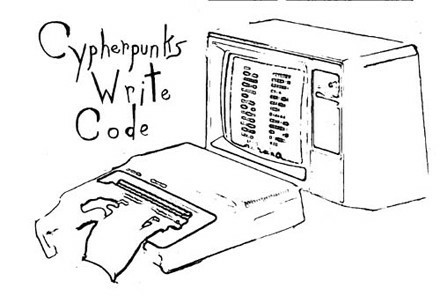
Join Honorary Chair Fran Finney and the Running Bitcoin Challenge Committee as we honor legendary cypher punk, Hal Finney.
This is THE EVENT that combines Hal Finney’s love of running and Bitcoin and is raising funds and awareness to help defeat ALS, which ultimately claimed his life in 2014.
You are challenged to run (or walk, roll, or hike) the equivalent of a half marathon — cumulatively or all at once — by the end of January 10, 2023.
From wherever you are, spread the word about Bitcoin, participate in a healthy activity, feel good about doing your part to defeat ALS, and start the year off right
Hal Finney, one of the earliest bitcoin contributors, died eight years ago from complications of nervous system disease amyotrophic lateral sclerosis (ALS).
His spouse, Fran Finney, is now organizing a half marathon to raise funds for ALS research via bitcoin.

The “Running Bitcoin Challenge” is set to take place between Jan. 1 and Jan. 10. The timing of the occasion leads up to the anniversary of Hal Finney’s “Running bitcoin” tweet, in which Finney famously disclosed he was deploying a Bitcoin node.
There is no set location — participants can choose to join anywhere they wish. Players are encouraged to either run, walk, roll or hike the equivalent of a half marathon (Hal’s favorite distance) either in one go or over the entire 10-day period.
Donors contributing at least $100 will receive an official shirt with the half marathon’s logo, while the event’s top 25 fundraisers will get a Hal Finney collectible signed by his wife.
As of Wednesday morning, the event has already managed to secure nearly $10,000 in bitcoin donations.
An advocate of cryptography and digital privacy, Finney was the recipient of the first-ever bitcoin transfer from the network’s pseudonymous creator Satoshi Nakamoto.
The bitcoin community often suspected Finney was Nakamoto, a claim he consistently denied. He reportedly found out about his condition in 2009 and decided to move away from the project.
Hal’s name is high in the Bitcoin pantheon as one of the first people to voice support for Satoshi Nakamoto’s invention and for being the first person to receive a Bitcoin transaction from Satoshi.
He was, for a time, considered one of the top contenders on the list of potential Satoshis himself (many in blockchain who reject Dr. Craig Wright’s statements still falsely believe Finney to be Bitcoin’s real creator).
Hal, who referred to himself as a “cypherpunk,” was a cryptographic activist who went from developing video games to working on the Pretty Good Privacy (PGP) project in the 1990s. He described his PGP work as “dedicated to the goal of making Big Brother obsolete.”
PGP creator Phil Zimmerman hired Hal as his first employee when PGP became PGP Corporation in the early 2000s. He described Hal as a “gregarious man” who loved skiing and long-distance running.
Despite gradual paralysis that eventually forced him to stop working, Hal continued to code software and follow the Bitcoin project.
Almost as famous as his 2009 tweet is his “Bitcoin and me” post on BitcoinTalk.org in March 2013, the last he’d ever make.
It’s a long post, and Hal was “essentially paralyzed” at the time, using an eye tracker to type. Forum stats show the post has been read over 278,000 times.
“When Satoshi announced the first release of the software, I grabbed it right away,” he wrote. “I think I was the first person besides Satoshi to run bitcoin. I mined block 70-something, and I was the recipient of the first bitcoin transaction when Satoshi sent ten coins to me as a test.
I carried on an email conversation with Satoshi over the next few days, mostly me reporting bugs and him fixing them.”
Hal himself always denied being Satoshi Nakamoto, adding later that he’d sold most of the Bitcoins he mined (at pre-2014 prices) to pay for his treatments. He also mentioned putting some in a safe deposit box for his children.
“And, of course, the price gyrations of bitcoins are entertaining to me.
I have skin in the game.
But I came by my bitcoins through luck, with little credit to me.
I lived through the crash of 2011.
So I’ve seen it before.
Easy come, easy go.”
Hal Finney
www.runningbitcoin.us

- International payment using the radio waves
 In a first, Bitcoin developers have done something amazing amid the criticism over the lightning network and issues associated with it. A team of developers has made an international payment using the radio … Continue reading International payment using the radio waves
In a first, Bitcoin developers have done something amazing amid the criticism over the lightning network and issues associated with it. A team of developers has made an international payment using the radio … Continue reading International payment using the radio waves - Happy New Year !!!!Happy New Year!May the coming year be full of grand adventures , peace, prosperity and opportunities.Dream big and make the most of 2024!
- Discipline Quotes
 My inspiration for this page was given to me by my new aquired friend, a fellow Truth Seeker – Joris and to whom I dedicate this page… Wish you… as well as to … Continue reading Discipline Quotes
My inspiration for this page was given to me by my new aquired friend, a fellow Truth Seeker – Joris and to whom I dedicate this page… Wish you… as well as to … Continue reading Discipline Quotes - Merry Christmass and A Happpy New Year to all
 To all my readers from the bottom of my heart I wish you Happy Holiday among family and friends, a jolly Merry Christmas and a Happy New Year and may 2024 bring you … Continue reading Merry Christmass and A Happpy New Year to all
To all my readers from the bottom of my heart I wish you Happy Holiday among family and friends, a jolly Merry Christmas and a Happy New Year and may 2024 bring you … Continue reading Merry Christmass and A Happpy New Year to all - Bitcoin White Paper turn 15
 Bitcoin white paper turns 15 and the Legacy of Satoshi Nakamoto lives on. “I’ve been working on a new electronic cash system that’s fully peer-to-peer, with no trusted third party,” Satoshi Oct. 31, … Continue reading Bitcoin White Paper turn 15
Bitcoin white paper turns 15 and the Legacy of Satoshi Nakamoto lives on. “I’ve been working on a new electronic cash system that’s fully peer-to-peer, with no trusted third party,” Satoshi Oct. 31, … Continue reading Bitcoin White Paper turn 15















































































































